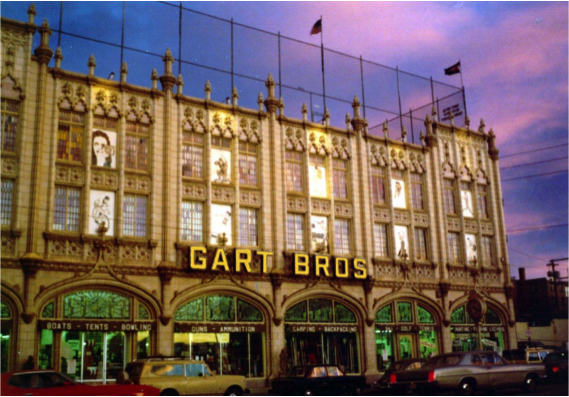Adaptive reuse has been garnering headlines for more than a decade, but Colorado businesses and developers have a rich history of leveraging adaptive reuse to great success long before it became the mot du jour in commercial real estate.
Adaptive reuse projects constitute 1 to 2 percent of all commercial real estate space in the U.S. That figure is estimated to increase two-fold over the next five years, surpassing other recognized noncore property types such as self-storage. So, what’s driving this latest development trend?
In collaboration with CCIM Institute, the Alabama Center for Real Estate at the University of Alabama recently answered this question in a research paper titled “Adaptive Reuse: Turning Blight into Bright.” It’s also a first-ever attempt to quantify and qualify adaptive reuse activity across primary, secondary and tertiary U.S. markets. In short, adaptive reuse is the solution to many challenges faced by cities – from providing affordable housing, to replacing brick-and-mortar stores with experiential retail, to combating blight in neighborhoods with abandoned or underutilized buildings.
While the paper prominently profiles the Punch Bowl Social that transformed the former air traffic control tower at Denver’s legacy Stapleton Airport, there are decades of other examples of properties repurposed in Colorado. Denver, in particular, may rival Chicago, Boston and even New York in the number and breadth of adaptive reuse projects in the last 10 years. A few noteworthy projects go beyond the well-known Denver Union Station anchoring downtown Denver today.
Stapleton Airport/Punch Bowl Social. After Stapleton Airport closed in the 1990s, most of the property was redeveloped as a residential and retail area. But as the rest of the airport disappeared, the old control tower remained – eventually becoming a beloved part of the neighborhood skyline. The city approached Punch Bowl Social about transforming the property into a family friendly entertainment space. To add features such as a bowling alley, developers had to get creative. Plus, the height of the tower posed a challenge. Local officials collaborated to address zoning issues, and ultimately allowed Punch Bowl Social to preserve the structure and provide a much-needed addition to the area.
Tattered Cover bookstore. The owners of Tattered Cover, a popular experiential retail concept dating back to the 1970s, repeatedly have employed adaptive reuse in locations throughout the city. The company’s first foray into adaptive reuse occurred in 1986 in the Cherry Creek shopping district in Denver. Looking to expand, the bookstore transformed a four-story former Neustetter’s department store off First Avenue across from the modern-day Cherry Creek mall.
After later losing its lease in 2006, Tattered Cover again turned to adaptive reuse, moving the business into the newly renovated historic Lowenstein Theater, which was facing demolition in the absence of a new owner or tenant. Tattered Cover demonstrates how a business can merge experiential retail with adaptive reuse to create something original in what once was old and blighted.

Originally built in the 1950s as a Chrysler automobile dealership, in 1971 the founder of Gart Brothers Sporting Goods had another idea for this building, centrally located in Denver’s commercial center. Gart Brothers was acquired by Sports Authority in 2003, which shuttered its operations in 2016, leaving the Sports Castle in need of yet another adaptive reuse.
Courtesy The Gart Cos.
Gart Brothers Sports Castle. With its distinctive façade, the Gart Brothers Sports Castle building is looking for its third reincarnation in commercial real estate. Originally built in the 1950s as a Chrysler automobile dealership, in 1971 the founder of Gart Brothers Sporting Goods had another idea for this building, centrally located in Denver’s commercial center. Founder Jerry Gart converted the multistory building – complete with ramps connecting each floor – into a “Sportsman’s Castle” equipped with tennis courts and a driving range on the rooftop. Golf carts shuttled customers up through 100,000 square feet of the largest sporting goods store west of the Mississippi. Gart Brothers later was acquired by Sports Authority in 2003, which shuttered its operations in 2016, leaving the Sports Castle in need of yet another adaptive reuse.
Colorado leads the trend. Effective adaptive reuse is where creativity meets business savvy; it continues to pick up steam across the U.S., not only for its ability to preserve architectural history, but also to drive net operating income and yield. This new research on adaptive reuse provides the first industry-developed definition for adaptive reuse, with detailed criteria to qualify a project as adaptive reuse, helping ensure its continued viability and legitimacy.
Colorado businesses and developers know this well, as the state is as much an epicenter for adaptive reuse activity as any prominent and much older state in New England or along the East Coast. Whether it’s the 300-plus days of sunshine annually that enable it to turn so much blight into bright or something else entirely, Colorado can make a legitimate claim to leading the adaptive reuse charge before it was popular or a recognized development trend in commercial real estate.














